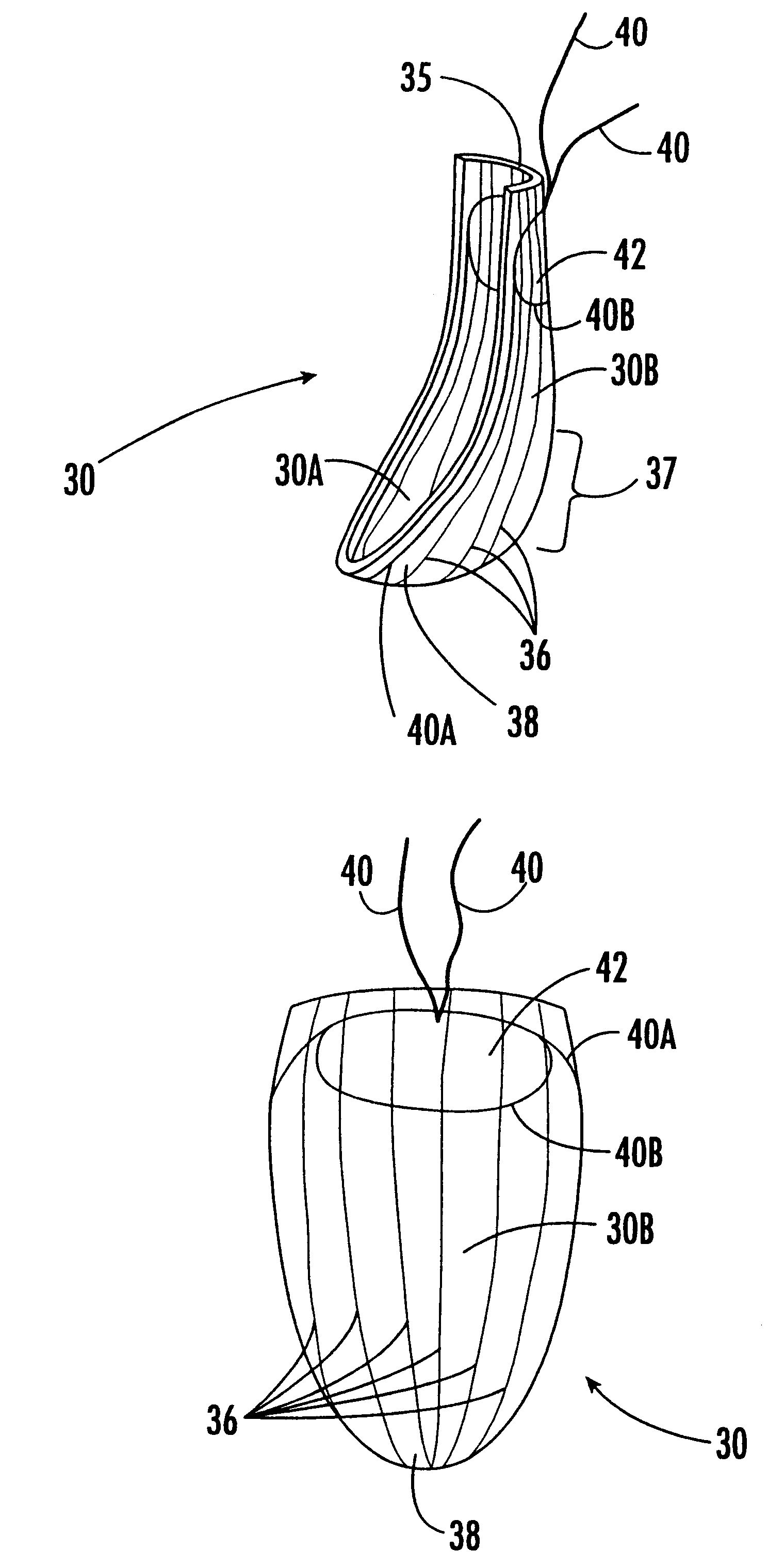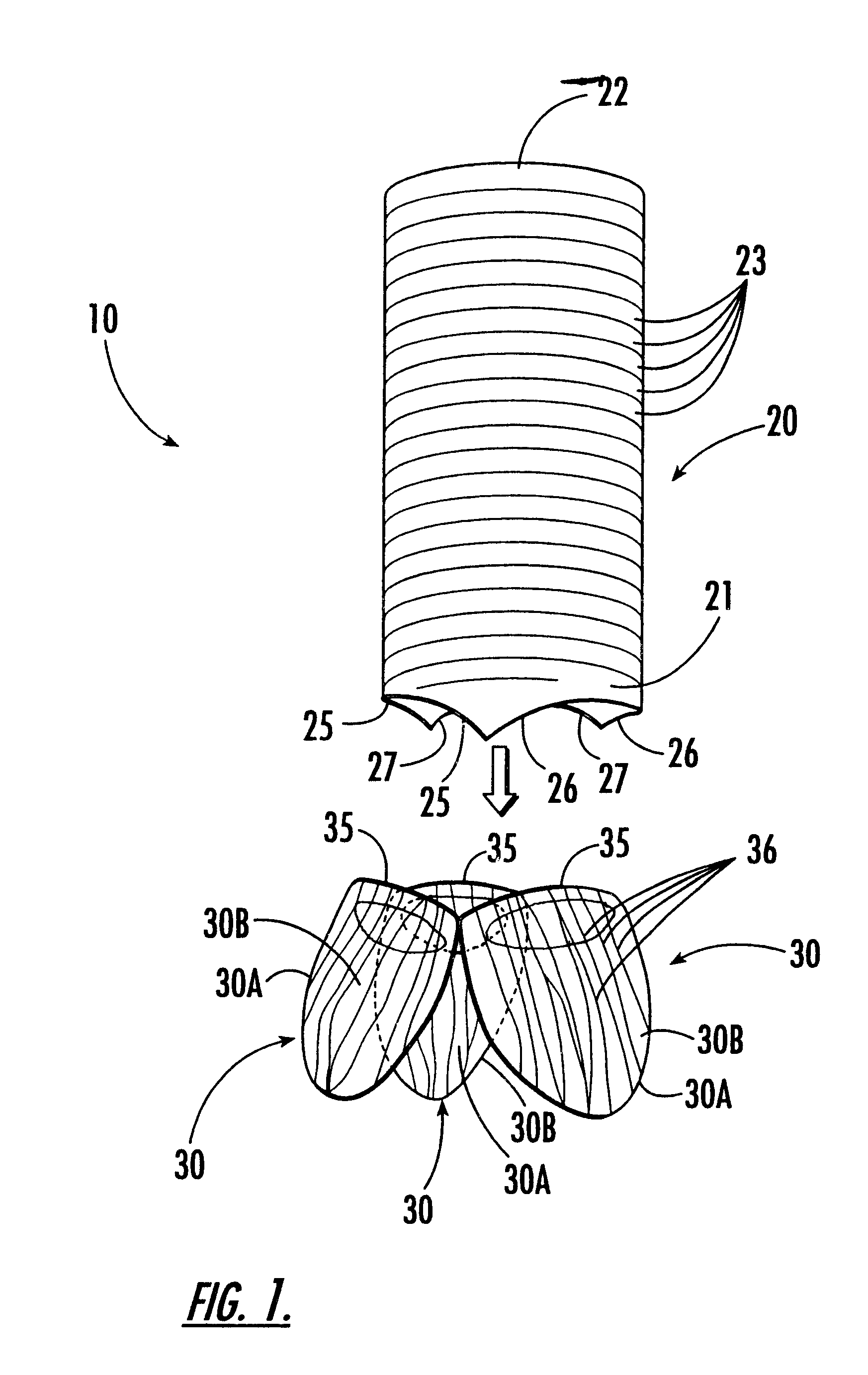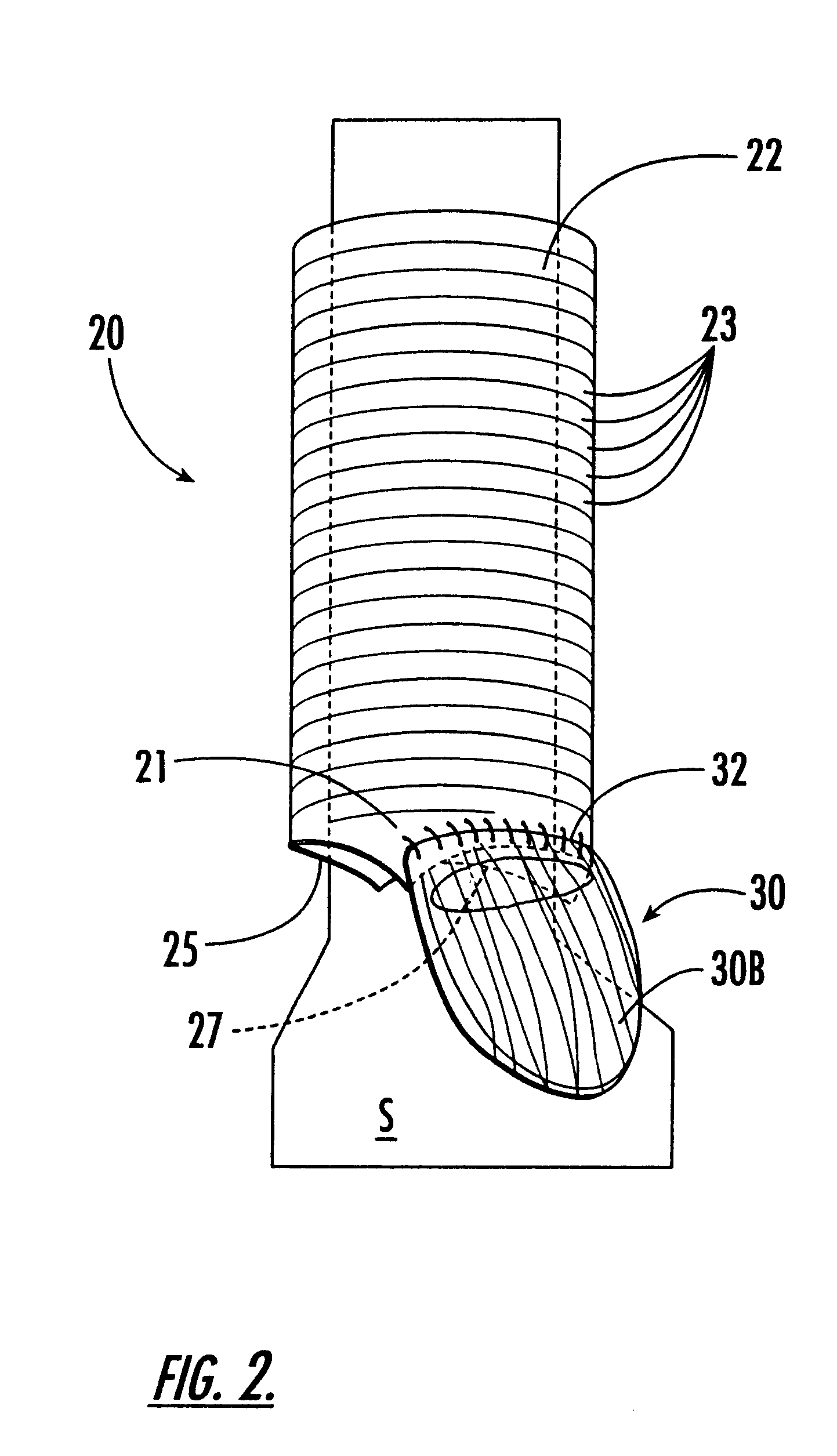Aortic root prosthesis with compliant sinuses
a technology of aortic root and sinuses, which is applied in the field of aortic root prosthesis with compliant sinuses, can solve the problems of leaflet abrasion and ultimately failure, compromising the physiological function and longevity of the aortic valve, and failing to capture the geometry of the sinuses of the valsalva and of the associated sino-tubular ridge, so as to prevent leaflet abrasion and failure, promote proper blood flow, and redu
- Summary
- Abstract
- Description
- Claims
- Application Information
AI Technical Summary
Benefits of technology
Problems solved by technology
Method used
Image
Examples
embodiment i
W1=W2=H I
W1 corresponds to the widths of the first sinus 30 and of sino-tubular junction 31, and W2 corresponds to the widths of the second and third respective sinuses 30 and of respective sino-tubular junctions 32 and 33.
embodiment ii
W1=H+4
W2=H-2 II
W1 corresponds to the width of the first sinus 30 and of sino-tubular junctions 31, and W2.corresponds to the widths of the second and third respective sinuses 30 and of respective sino-tubular junctions 32 and 33.
embodiment iii
W1=H-4
PUM
 Login to View More
Login to View More Abstract
Description
Claims
Application Information
 Login to View More
Login to View More - R&D
- Intellectual Property
- Life Sciences
- Materials
- Tech Scout
- Unparalleled Data Quality
- Higher Quality Content
- 60% Fewer Hallucinations
Browse by: Latest US Patents, China's latest patents, Technical Efficacy Thesaurus, Application Domain, Technology Topic, Popular Technical Reports.
© 2025 PatSnap. All rights reserved.Legal|Privacy policy|Modern Slavery Act Transparency Statement|Sitemap|About US| Contact US: help@patsnap.com



